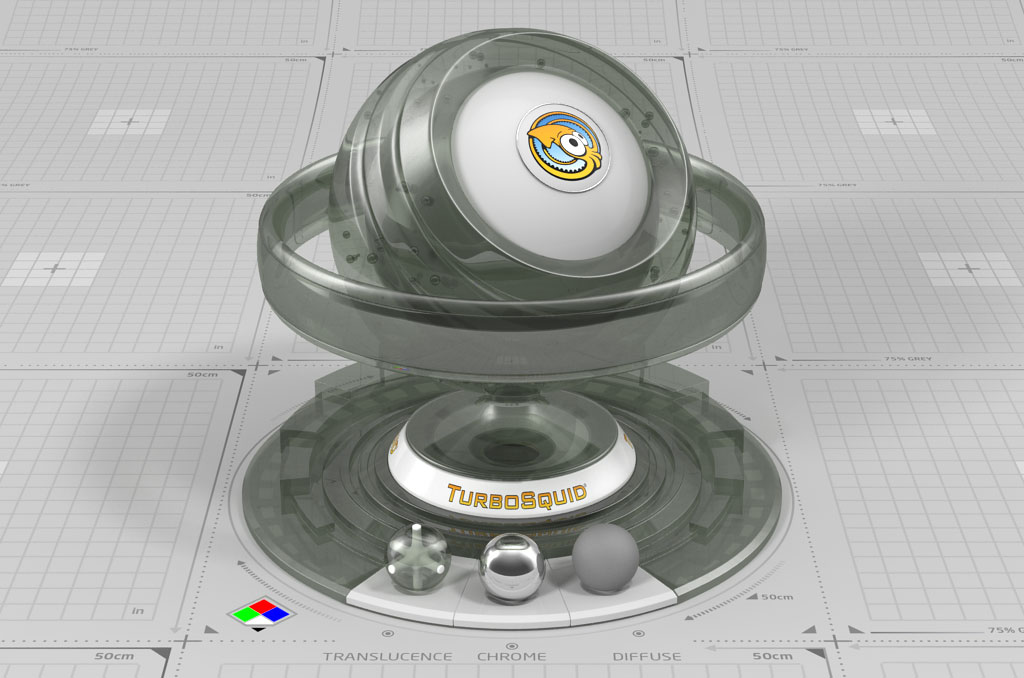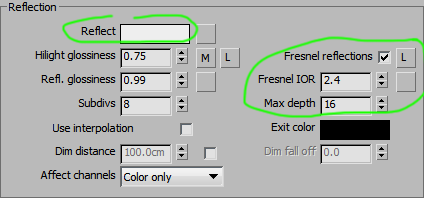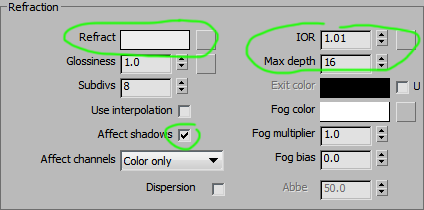This material is roughly based on any standard glass or acrylic, but with a couple of small changes.
As with all transparent materials, the Base color is near black, while Reflections are strong and set to Fresnel.
Try using some fake speculars in the unlinked HiLight Glossiness slot, like a basic grayscale swirl map. This creates a bit of a smudge/swirl effect in the highlights.
Refractions should be set to a light color (make sure Affect Shadows is on for realistic behavior). Refraction IOR is a step back from realistic settings and it’s okay to use something a little fake. Put this setting at 1.01 to make sure it doesn’t bend the light too much. There are a few reasons for this: if the curved surface of the glass is not perfect; the shell is not uniformly thick; if it’s too thick, crooked, etc.; then the resulting distortion in the refractions might look distracting and unrealistic. With this method, the reflections and refractions will look great, even if they’re not perfectly realistic.
To change the tint color and intensity, just adjust the Refract color; lower it to make the windows more tinted. If the window needs to be a certain color, give it a little bit of a color cast.
To make sure that there are enough Reflection/Refraction levels, try bumping them up to 16. This is helpful if there are a lot of glass and chrome surfaces in the scene.







